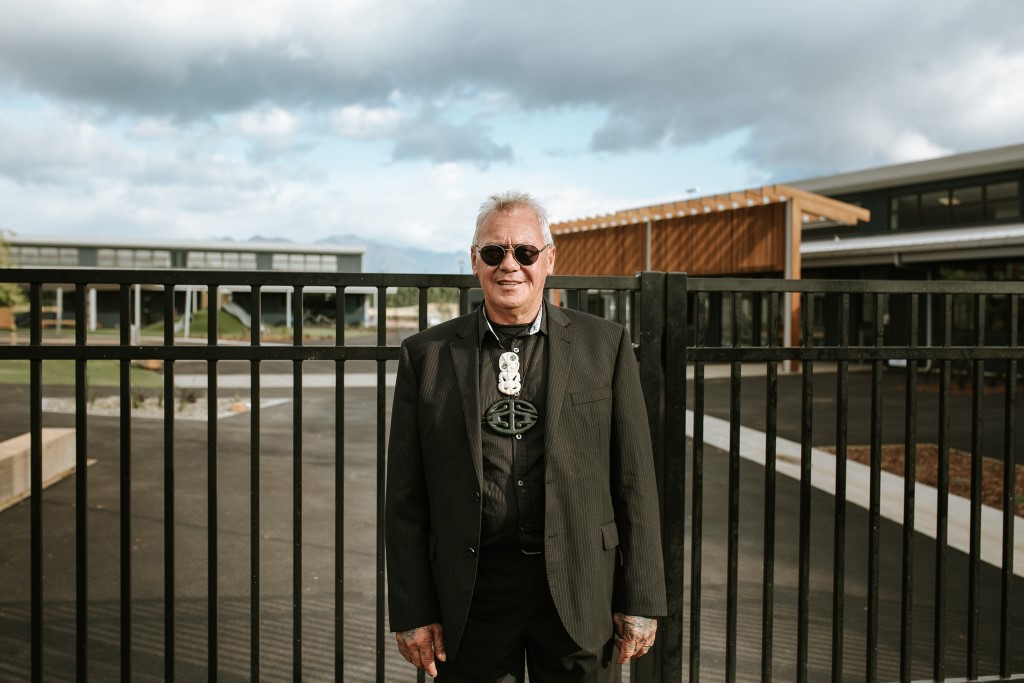We were gifted the name Te Kura O Take Kārara by Ngāi Tahu. Take Kārara is a historic name for a location that is very close to where our school sits. The site is clearly shown on the famous map drawn by H.K. Taiaroa in 1880 which detailed many of the names for the region that are in use today.
The Ngāi Tahu Atlas, Kā Huru Manu, describes Take Kārara as a kāinga nohoanga, or settlement, at the southern end of Lake Wānaka. During the 1879 Smith-Nairn Royal Commission of Inquiry into the Ngāi Tahu land claims, Take Kārara was described as a kāinga mahinga kai, or food gathering site, where pora, mahetau, tuna (or eels) and weka were gathered.
The Ngāi Tahu kaumatua Tahu Potiki, who sadly died in 2019, provided greatly valued advice and wisdom to our Board as they developed the initial statement of vision and values for the school, and his deep knowledge of our local history assisted significantly in the choice of Te Kura O Take Kārara as the name of our new school.
It has been the Board’s wish to form an ongoing partnership with Ngāi Tahu. Having been gifted our name, we also received advice from Bubba Thompson, our Ngāi Tahu advisor from Te Rau Aroha Marae in Bluff, about Mahinga Kai and it’s importance to Ngāi Tahu.
Also important to Mahinga Kai is:
Mahinga Kai is seen as more than food – it is kai for the ears, kai for knowledge, kai for the soul, kai for storytelling – indeed it is food for life.
This deep understanding of Mahinga Kai provides us with many great opportunities for discovery and for learning at Te Kura O Take Kārara through place-based learning, environmental and sustainability learning, and cultural responsiveness, and importantly it supports us to strengthen our bond with Ngai Tahu
Bubba supported us with the naming of the buildings in our school and the foods gathered at Take Karara were an obvious fit for these. The beautiful manifestations on our windows depicting these food sources were created by the talented Ngāi Tahu artist Simon Kaan.
Tuna
Tī Kōuka
Weka
Te Pataka was chosen as the name for our Administration building, as this can be seen as a storehouse of knowledge, pukapuka (books), and resources, as well as a place to eat kai.
Bubba Thompson officially opened the school by returning the original sod that had been dug up in March 2019 prior to building works commencing to it’s resting place in front of the new school hall.
Matua Bubba, along with Matua Dean and Whaea Evelyn Cook also from Ngāi Tahu led the students, staff and parents around the school, blessing each building before entering the hall for speeches and kai.
As Matua Dean led the children into the school hall for the first time these words were said …
Matua Dean: Mā wai te whare? Who is this place for?
Children: Mā tatau. It is for all of us.
Matua Dean: Mā te aha te whare? What is this place for?
Children: Mā te ako. It is for learning.
Matua Dean: He aha te ingoa o te kura? What is the name of this kura/school?
Children: Take Kārara
Mahinga Kai is said to be, the “DNA of Ngai Tahu”, it is currency and an integral part of their identity. While the natural resources and the places from where they were gathered are important, so too are the understandings and customs that sit alongside these. It is not just about the kai in our pukus.

Bubba Thompson sadly passed away in 2023.
Bubba’s involvement was instrumental in the Establishment of Te Kura O Take Kārara and his continuation in maintaining our relationship with Ngai Tahu and the cultural narrative of Take Kārara. We have been so grateful for his knowledge, passion and continual support in understanding and sharing the significance of the place that is Take Kārara. He has been there for us at those most important moments and we feel so incredibly lucky to have spent that time together and for his care and connection with our kura.
Bubba officially opened the school at the beginning of 2020 by returning the original sod that had been dug up in March 2019 prior to building works commencing to its resting place in front of the new school hall.
Matua Bubba, along with Matua Dean and Whaea Evelyn Cook also from Ngāi Tahu led the students, staff and parents around the school, blessing each building before entering the hall for speeches and kai.
Bubba, alongside Tahu Potiki supported the Establishment Board in developing the strong and significant vision and values for Te Kura O Take Kārara. He sat alongside Tahu, when the decision was made to gift the name to our school.
He was so incredibly proud of our Kapahaka group performing at the opening of the Cardrona Ski Resort alongside Jacinda Adren and loved seeing them wear our school uniform and showing off the amazing school logo.
Staff, students and board members have spent time with Bubba at Te Rau Aroha Marae where his manaakitanga and aroha was felt by all of us in his presence.
Our final time together was the unveiling of our Pou. Bubba was there with us all the way through this project from the planning, the engagement with Steve the carver, to the blessing and unveiling in September last year. The Pou placement was directly in the place where the sod was returned at the opening of the school. It was a memorable occasion that signifies our cultural marker for Take Kārara.
We will remember Bubba for his warmth, his big heart, his fun-loving attitude and his time to talk and connect.
